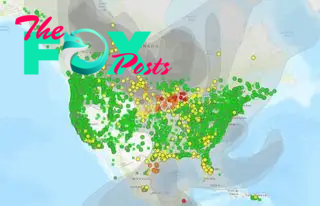Health
Wildfire smoke is hitting the US from Canada and Mexico
Dozens of wildfires are burning across Canada in May 2024 and sending unHealthy smoke blowing into the northern U.S. again. At the same time, the southeastern U.S. is getting smoke from Mexico, where drought conditions have been fueling fires.
Last year, Canada's record 2023 wildfire season introduced millions of Americans across the Midwest and northeastern states to the health hazards of wildfire smoke, with air quality alerts that reached levels never seen there before.
Professional baseball Games were postponed and the skies in New York City turned orange with haze, at times exposing millions of people to the worst air quality in the world. In some regions, the smoke hung on for days.
The pressing question on many people's minds: "Is this the new normal?" From our perspective as air quality scientists, we think the answer is likely "yes."
Global warming means more fires
Hotter, drier conditions, coupled with dry grasses and underbrush that accumulated over decades of fire suppression, have made large wildfires more common.
Canada is experiencing a second consecutive extremely dry year in 2024, and it is also facing the reemergence of fires that smoldered underground through the winter. May 12-14, 2024, smoke from fires in British Columbia and Alberta reached unHealthy levels from Montana to Wisconsin and began to spread south and east into the Midwest and Great Lakes region.

The North American Seasonal Fire Assessment and Outlook for May through July highlights drought conditions in western Canada and Central America and higher than normal fire risk in both regions. It also notes the challenge of forecasting fire risk for later in the year as the El Niño climate pattern transitions to La Niña in late summer.
-

 Health9h ago
Health9h agoThe Surprising Benefits of Talking Out Loud to Yourself
-

 Health11h ago
Health11h agoDoctor’s bills often come with sticker shock for patients − but health insurance could be reinvented to provide costs upfront
-

 Health17h ago
Health17h agoHow Colorado is trying to make the High Line Canal a place for everyone — not just the wealthy
-

 Health1d ago
Health1d agoWhat an HPV Diagnosis Really Means
-

 Health1d ago
Health1d agoThere’s an E. Coli Outbreak in Organic Carrots
-

 Health2d ago
Health2d agoCOVID-19’s Surprising Effect on Cancer
-

 Health2d ago
Health2d agoColorado’s pioneering psychedelic program gets final tweaks as state plans to launch next year
-

 Health3d ago
Health3d agoWhat to Know About How Lupus Affects Weight


























